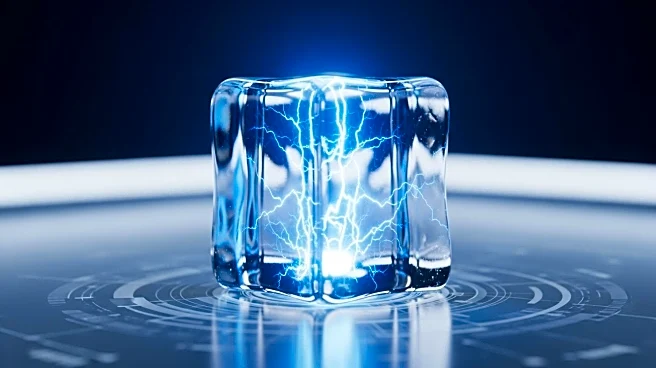What's Happening?
Researchers have discovered that ice can generate electricity through a process known as flexoelectricity. This phenomenon occurs when ice is subjected to mechanical deformation, leading to the generation of an electric charge. Unlike traditional piezoelectric materials, which produce charge under simple compression, ice generates electricity through uneven deformation. This groundbreaking discovery was made by a collaborative effort involving the Institute of Nanoscience of Barcelona, Xi’an Jiaotong University, and Stony Brook University. The study, published in Nature Physics, highlights the potential applications of this discovery in fields such as environmental monitoring and technological innovation, particularly in ultra-cold environments.
Why It's Important?
The discovery of ice's ability to generate electricity through flexoelectricity could have significant implications for various industries. It challenges previous assumptions about the electromechanical capabilities of natural materials and opens up new possibilities for sustainable technology. Potential applications include the development of self-sustaining sensors for ultra-cold environments, which could be used for environmental monitoring or detecting movements and vibrations in polar regions. This could lead to cost-effective and innovative solutions similar to thermoelectric generators, enhancing the capability of devices in extreme conditions. The research also provides insights into natural electrical processes, such as the accumulation of electrical charges in thunderstorm clouds, which could improve our understanding of lightning formation.
What's Next?
As research into the flexoelectric properties of ice continues, scientists aim to further explore its electromechanical capabilities and potential applications. The international research team hopes to unlock more mysteries of ice and its role in energy generation and electronic systems. This could lead to a paradigm shift in how natural materials are utilized in sustainable technology. Future studies may focus on combining ice with other materials and miniaturizing devices to develop innovative and cost-effective solutions for environmental and technological applications.
Beyond the Headlines
The discovery of ice's flexoelectric properties prompts a reevaluation of natural materials' roles in autonomous and cost-effective systems. This research could inspire further exploration of other natural materials and their potential contributions to sustainable technology. The insights gained may lead to the development of new technologies that leverage the unique properties of ice, offering a novel approach to energy generation and environmental solutions.












